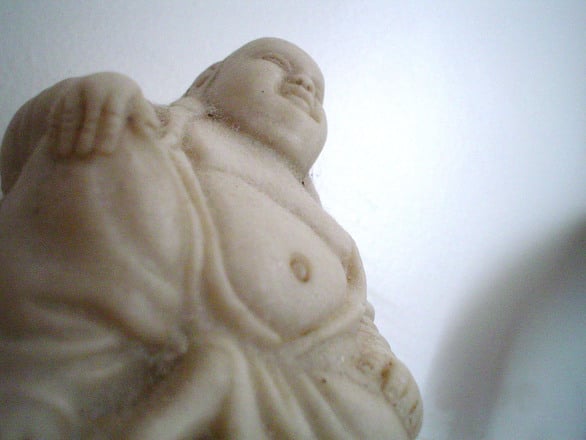(Post contributed by Kristen Howerton, author of Rage Against the Minivan. Read more about Kristen and other contributors here.)
How do I talk to my kids about other religions?
My upbringing was very conservative. Our house had little tolerance for other religions. In fact, we were taught to believe that people in other religions were 1) spiritually deceived, and 2) bound for hell. Religions like Buddhism or Islam were demonized, and I use that in the literal sense of the word. My parents considered them demonic.
Mark and I don’t hold those views. Our faith has evolved since our teenage days, and we are definitely Christian believers raising our kids in the Christian faith. But we would rather be the kind of people who build bridges from one faith to another instead of building walls between them. That’s why we have decided to impart to our kids that other religions are not bad or wrong. They are our attempt to figure out how to treat people, how to live, and how to find meaning in our circumstances on earth.
So when we talk about other religions with our kids, we approach them positively rather than negatively.
Here’s what that looks like on a practical level:
We stress similarities.
It’s important to me that our kids see unity in the world’s religions. We tell our kids that when people pray to Allah or Jehovah, they are praying to the same God. Yes, they understand God differently, and they worship differently, but that’s because we’re humans and it’s difficult for humans to understand God. Sometimes that lack of understanding results in different ideas—and some religions even think there are many gods.
Of course, we communicate that our understanding is that God sent His son Jesus to have a relationship with us. That’s the Christian story. But the fact that Christians and Muslims have different beliefs don’t change who God is. It just shows that we’re working hard to understand God and sometimes the process can be messy.
We focus on the best parts.
There’s some version of the Golden Rule in just about every religion I’ve encountered. Buddha taught his followers to put themselves in the place of another. Hinduism teaches adherents not to harm another in any way that would harm ourselves. Muhammad taught his followers to wish for your brother what you wish for yourself. Are there elements of other religions that make us uncomfortable? Sure! Just like most of the Old Testament book of Judges makes me cringe. I want my kids to express the best aspects of Christianity rather than those parts that have proven ugly over the years. In the same way, I want them to be aware of what’s good about other religions—not what’s bad.
We keep other faiths accessible.
We have a well-used copy of the Quran in our home that Jafta was excited to read for a season. Also the teachings of Buddha. And we have a number of Bibles. Keeping the texts of other religions accessible to my kids helps them approach these faiths with curiosity and wonder rather than fear. When they reach a point where they can look at those beliefs from a critical perspective, I’d rather it be based on familiarity—not xenophobia or a fear of the unknown.
Occasionally we attend a United Church of Christ in the area, and once a month the pastor engages in an interfaith dialogue with someone from a different faith tradition. They discuss beliefs, practices, gender roles, LGBT issues...everything. As an adult, this has been so helpful for me, just because I didn’t get the chance to listen to people from other religions during my upbringing. Our oldest son follows along with these conversations and I hope it’s building a good foundation for him.
We provide context.
History is so important, not just in understanding our own Christian faith and how it developed, but in understanding the evolution of Judaism, Islam, Hinduism, etc. There’s a wonderful series of educational videos called “Crash Course in History” by John Green—yes, that John Green, the author behind The Fault in Our Stars. The videos are animated, entertaining, and pretty wonderful. My kids love them. When these cover religion, it’s from a neutral and even positive perspective. That’s vital.
One of the best things we’ve done to teach our kids about world religions has been to read Bishop Desmond Tutu’s children’s book God’s Dream with them. You know kids—they get addicted to certain books, and this is one we’ve read together countless times. Its primarily message is simple: We look different, and come from different places. We talk about God in different ways. We pray and worship in different ways. But we’re still brothers and sisters.
If I can somehow keep communicating that message to my kids, then I’ll consider it another parenting win.
Photo credit: Fabrizzio Zampieri
Originally Published 9/23/2015

